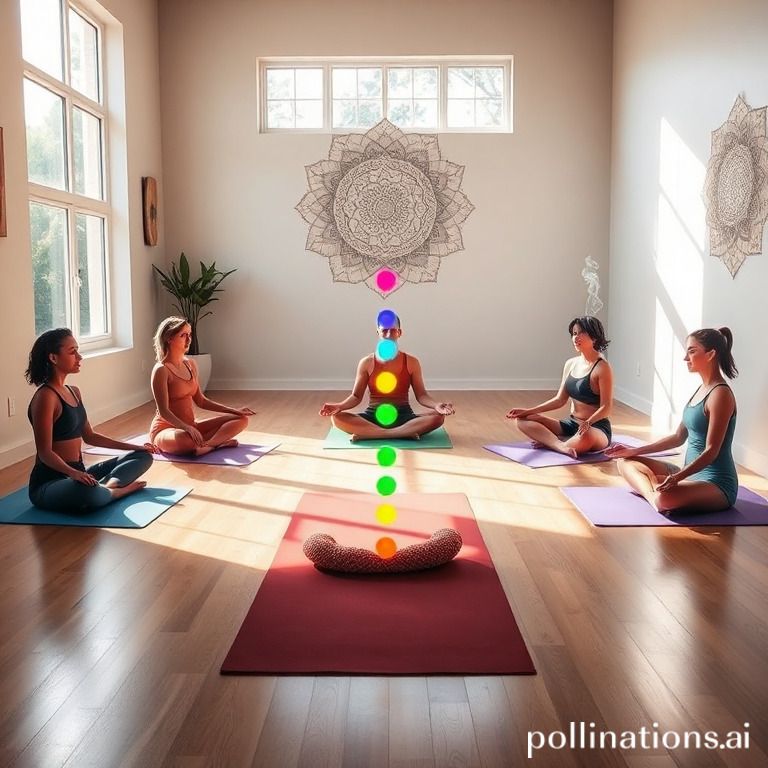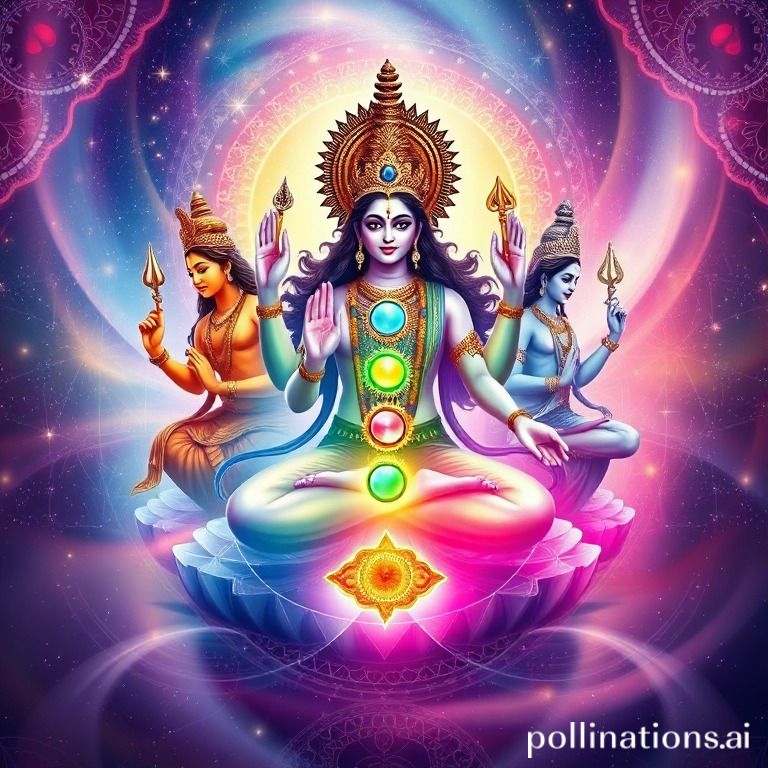Chakras are focal energy points found in the body. Derived from the Sanskrit word meaning “wheel,” they are spinning wheels of energy that must remain open and aligned.
But what impact do chakras have on your well-being? When in balance, energy flows freely through the chakras, bringing harmony to your body, mind, and spirit.
Nevertheless, when blocked or imbalanced, these energy centers can cause discord and various mental, physical, and spiritual issues. Luckily, aligning and balancing your chakras is not complicated.
You simply need a basic comprehending of what they are, how energy flows, and how to identify and correct blockages and imbalances. Chakras are utilized in Hinduism, Buddhism, Jainism, Sikhism, and Taoism.
Chakras in Hinduism
In Hindu philosophy, chakras are vital to apprehending the connection between the body, mind, and spirit. These energy centers are believed to be located along the spine and are associated with different aspects of human existence. The concept of chakras has deep roots in Hinduism and is an integral part of spiritual practices.
The Role of Chakras in Hindu Philosophy
Chakras are considered to be gateways that allow the flow of energy throughout the body. According to Hindu philosophy, there are seven main chakras, each representing a specific aspect of human consciousness and existence. These chakras are believed to be interconnected, and their balance is essential for overall well-being.
The first chakra, known as the Muladhara Chakra, is associated with stability and grounding. It symbolizes our connection to the earth and provides a foundation for the other chakras. The second chakra, also known as the Svadhisthana Chakra, represents creativity and passion. It is associated with emotions, sensuality, and pleasure.
The third chakra, known as the Manipura Chakra, is associated with personal power and confidence. It governs our self-esteem, willpower, and motivation. The fourth chakra, also known as the Anahata Chakra, represents love, compassion, and forgiveness. It is the center of emotional well-being and is associated with relationships and harmony.
The fifth chakra, known as the Vishuddha Chakra, governs communication and self-expression. It is associated with speaking one’s truth and finding one’s voice. The sixth chakra, also known as the Ajna Chakra, represents intuition and spiritual insight. It is associated with wisdom, perception, and the ability to see beyond the physical realm.
The seventh chakra, known as the Sahasrara Chakra, is the highest chakra and represents spiritual connection and enlightenment. It is associated with higher consciousness, cosmic energy, and the realization of one’s true self.
The Seven Chakras and their Meanings
The Muladhara Chakra is associated with stability, grounding, and security. It is located at the base of the spine and is symbolized by a lotus flower with four petals. The Muladhara Chakra is the foundation of the chakra system, and its energy is essential for physical and emotional well-being.
The Svadhisthana Chakra is associated with creativity, passion, and pleasure. It is located just below the navel and is symbolized by a lotus flower with six petals. The Svadhisthana Chakra is associated with the emotions and sensuality. Its energy is essential for healthy relationships and a fulfilling life.
The Manipura Chakra is associated with personal power, confidence, and motivation. It is located in the solar plexus and is symbolized by a lotus flower with ten petals. The Manipura Chakra is associated with the will and self-esteem. Its energy is essential for achieving success and overcoming obstacles.
The Anahata Chakra is associated with love, compassion, and forgiveness. It is located in the heart and is symbolized by a lotus flower with twelve petals. The Anahata Chakra is associated with the heart and emotions. Its energy is essential for healthy relationships and emotional well-being.
The Vishuddha Chakra is associated with communication and self-expression. It is located in the throat and is symbolized by a lotus flower with sixteen petals. The Vishuddha Chakra is associated with the throat and communication. Its energy is essential for communicating oneself clearly and effectively.
The Ajna Chakra is associated with intuition and spiritual insight. It is located in the middle of the forehead and is symbolized by a lotus flower with two petals. The Ajna Chakra is associated with the third eye and intuition. Its energy is essential for spiritual development and enlightenment.
The Sahasrara Chakra is associated with spiritual connection and enlightenment. It is located at the crown of the head and is symbolized by a thousand-petaled lotus flower. The Sahasrara Chakra is associated with the highest consciousness and enlightenment. Its energy is essential for achieving spiritual liberation.
| Chakra | Meaning |
|---|---|
| Muladhara Chakra | Stability and grounding |
| Svadhisthana Chakra | Creativity and passion |
| Chakra | Associated Concepts |
|---|---|
| Muladhara | Grounding, stability |
| Svadhishthana | Creativity, passion, sensuality |
| Manipura | Personal power, confidence, willpower |
Chakras in Yoga
In the realm of yoga philosophy, the concept of chakras is of paramount importance. These energy centers within the body are believed to play a vital role in our physical, mental, and spiritual well-being. By comprehending and harnessing the power of chakras, practitioners can achieve a deeper level of connection with themselves and the universe.
The Integration of Chakras in Yoga Philosophy
At the core of yoga philosophy is the belief in the interconnectedness of mind, body, and spirit. Chakras are seen as the gateway to this interconnectedness, representing different aspects of our being. From the root chakra, associated with stability and grounding, to the crown chakra, symbolizing spiritual enlightenment, each chakra offers a unique pathway for personal growth and self-discovery.
Activating and Aligning Chakras through Asanas and Pranayama
Yoga practice encompasses a wide range of techniques to activate and align the chakras. Asanas, or yoga poses, are specifically designed to stimulate and balance the energy flow through each chakra. From heart-opening poses to invigorate the heart chakra to twists and forward bends that activate the solar plexus and sacral chakras, the asana practice becomes a powerful tool for chakra activation.
Pranayama, the practice of breath control, also plays a crucial role in chakra alignment. Through specific breathing techniques, practitioners can direct prana, or life force energy, to the different chakras, facilitating their harmonious functioning. Deep, intentional breathing allows for the release of any blockages, enabling the smooth flow of energy throughout the body.
- Root Chakra: Grounding and Stability
- Sacral Chakra: Creativity and Passion
- Solar Plexus Chakra: Personal Power and Confidence
- Heart Chakra: Love and Compassion
- Throat Chakra: Communication and Self-Expression
- Third Eye Chakra: Intuition and Inner Wisdom
- Crown Chakra: Spiritual Connection and Enlightenment

Chakras in Reiki
Chakras are vital to Reiki healing, as they serve as energy centers that contribute to our overall well-being. By discerning and harnessing the flow of energy through these chakras, we can achieve a state of balance and harmony in our lives.
1. Harnessing Energy Flow through Chakras in Reiki Healing
Reiki practitioners believe that each chakra corresponds to specific aspects of our physical, emotional, and spiritual well-being. By channeling Reiki energy into these chakras, blockages are removed, and the energy flow is restored, promoting healing and vitality.
- Root Chakra: Represents grounding, stability, and a sense of security.
- Sacral Chakra: Associated with creativity, passion, and emotional well-being.
- Solar Plexus Chakra: Governs self-confidence, personal power, and motivation.
- Heart Chakra: Centered around love, compassion, and emotional balance.
- Throat Chakra: Facilitates clear communication and self-expression.
- Third Eye Chakra: Enhances intuition, insight, and spiritual awareness.
- Crown Chakra: Represents spiritual connection, enlightenment, and higher consciousness.
2. Clearing and Balancing Chakras for Holistic Well-being
In order to achieve holistic well-being, imperative to clear and balance our chakras regularly. This can be done through various techniques, such as meditation, energy healing, and Reiki practices.
A balanced chakra system allows for the free flow of energy, promoting physical health, emotional stability, and spiritual growth. It is believed to optimize our overall well-being and vitality.
| Chakra | Associated Aspects |
|---|---|
| Root Chakra | Grounding, stability, security |
| Sacral Chakra | Creativity, passion, emotional well-being |
| Solar Plexus Chakra | Self-confidence, personal power, motivation |
| Heart Chakra | Love, compassion, emotional balance |
| Throat Chakra | Clear communication, self-expression |
| Third Eye Chakra | Intuition, insight, spiritual awareness |
| Crown Chakra | Spiritual connection, enlightenment, higher consciousness |
Sources: Reiki: A Comprehensive Guide by Pamela Miles, The Seven Spiritual Laws of Success by Deepak Chopra
Navigating the Interconnection of Chakras
In this section, we will ponder the fascinating world of chakras and their interconnectedness. Absorbing how energy flows between chakras is essential for achieving a harmonious balance in our lives.
1. Apprehending the Flow of Energy between Chakras
The flow of energy between chakras is crucial for maintaining physical, mental, and emotional well-being. By comprehending this flow, we can identify any blockages or imbalances and work towards restoring harmony.
- Chakras: Learn about the seven main chakras and their specific functions.
- Chakra Healing: Acquire the various techniques for healing and balancing chakras.
- Energy Work: Investigate the different modalities of energy work that can empower the flow between chakras.
- Reiki: Understand how Reiki can be used to channel energy and promote chakra alignment.
- Yoga: Find out how specific yoga poses and practices can activate and balance the chakras.
2. Achieving Harmonious Balance through Chakra Alignment
Once we understand the flow of energy between chakras, we can focus on achieving a harmonious balance through chakra alignment. This alignment helps to optimize our overall well-being and leads to a deeper connection with ourselves and the world around us.
- Chakra Healing: Ponder different methods of chakra healing, such as meditation, crystals, and sound therapy.
- Energy Work: Ascertain advanced energy work techniques to enrich chakra alignment and balance.
- Reiki: Learn how Reiki practitioners use specific hand positions to align and activate the chakras.
- Yoga: Realize specific yoga sequences and practices that focus on chakra alignment and balance.
| Chakra | Main Functions |
|---|---|
| Root Chakra | Stability, grounding, and survival |
| Sacral Chakra | Creativity, sexuality, and emotional balance |
| Solar Plexus Chakra | Personal power, confidence, and self-esteem |
| Heart Chakra | Love, compassion, and emotional healing |
| Throat Chakra | Communication, self-expression, and truth |
| Third Eye Chakra | Intuition, clarity, and spiritual awareness |
| Crown Chakra | Connection to higher consciousness and divine energy |
Conclusion
Harnessing the power of chakras can greatly contribute to one’s spiritual growth. By perceiving and activating these energy centers within our bodies, we can achieve a harmonious balance between mind, body, and soul.
The practice of chakra meditation and healing can lead to enhanced self-awareness, inner peace, and a deep connection with the divine. By aligning our chakras, we can unveil our true potential and experience a profound transformation. Whether you are new to chakras or have been on this spiritual journey for some time, embracing their power can open up a world of possibilities and bring about a greater sense of fulfillment and enlightenment. Start traversing the realm of chakras and initiation on a journey towards spiritual growth today.
Read More:
1. What Is Chakra Meditation? | Learn The Benefits Of Chakra Meditation
2. 7 Chakras Meditation To Open & Balance Your Energy Centers
Source:
- https://en.wikipedia.org/w/index.php?fulltext=1&search=Hindu+religion
- https://www.reddit.com/search/?q=Kundalini+Yoga
- https://scholar.google.com/scholar?hl=en&as_sdt=0%2C5&q=Hindu+religion
- https://www.sciencedirect.com/search?qs=Kundalini+Yoga
- https://www.google.com/search?q=Hindu+religion &sca_esv=559959589&hl=en&tbm=bks&tbas=0&source=lnt&sa=X&ved=2ahUKEwjP16DZmviAAxX8amwGHa7dBSEQpwV6BAhmEAw&biw=1366&bih=625&dpr=1
